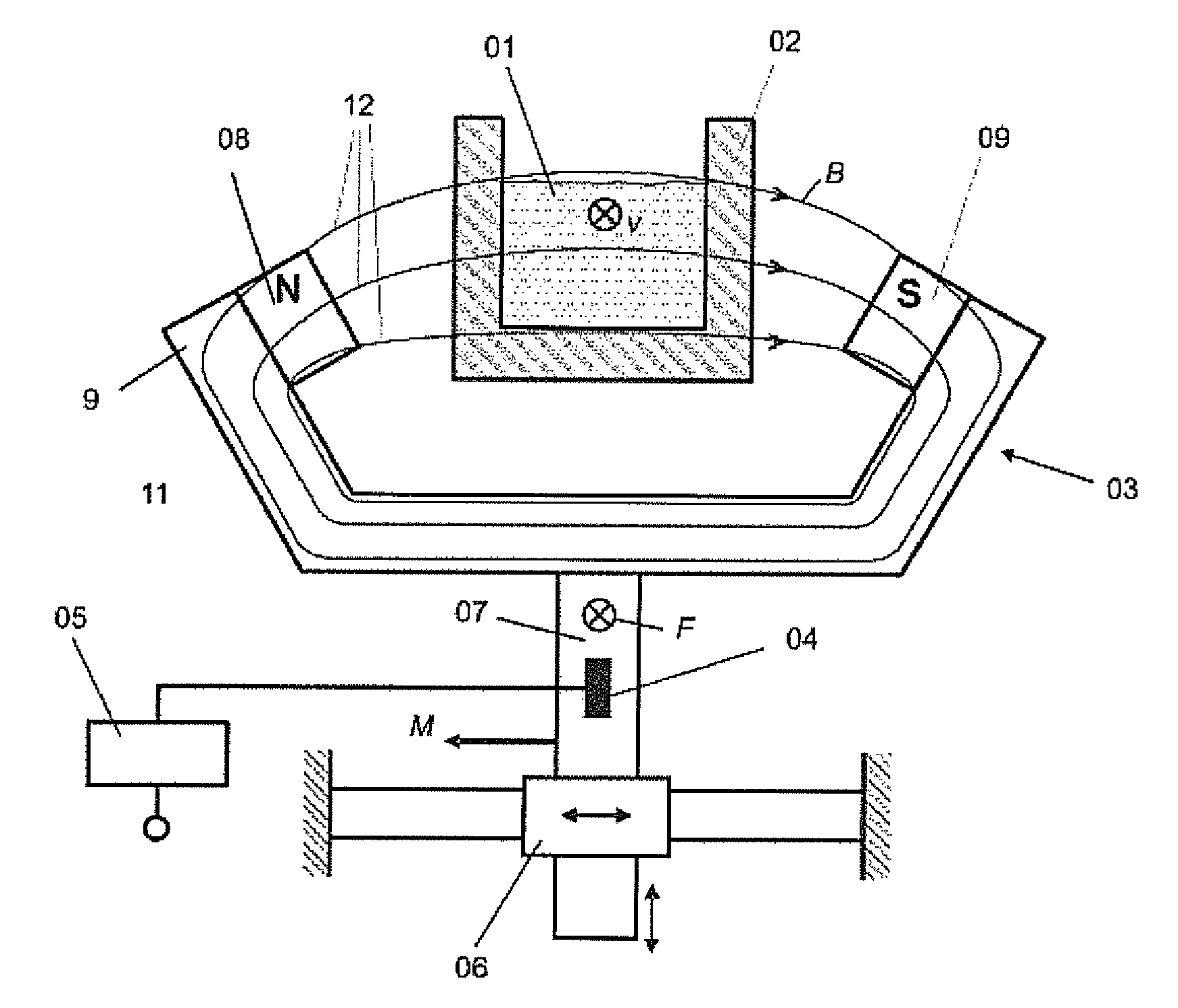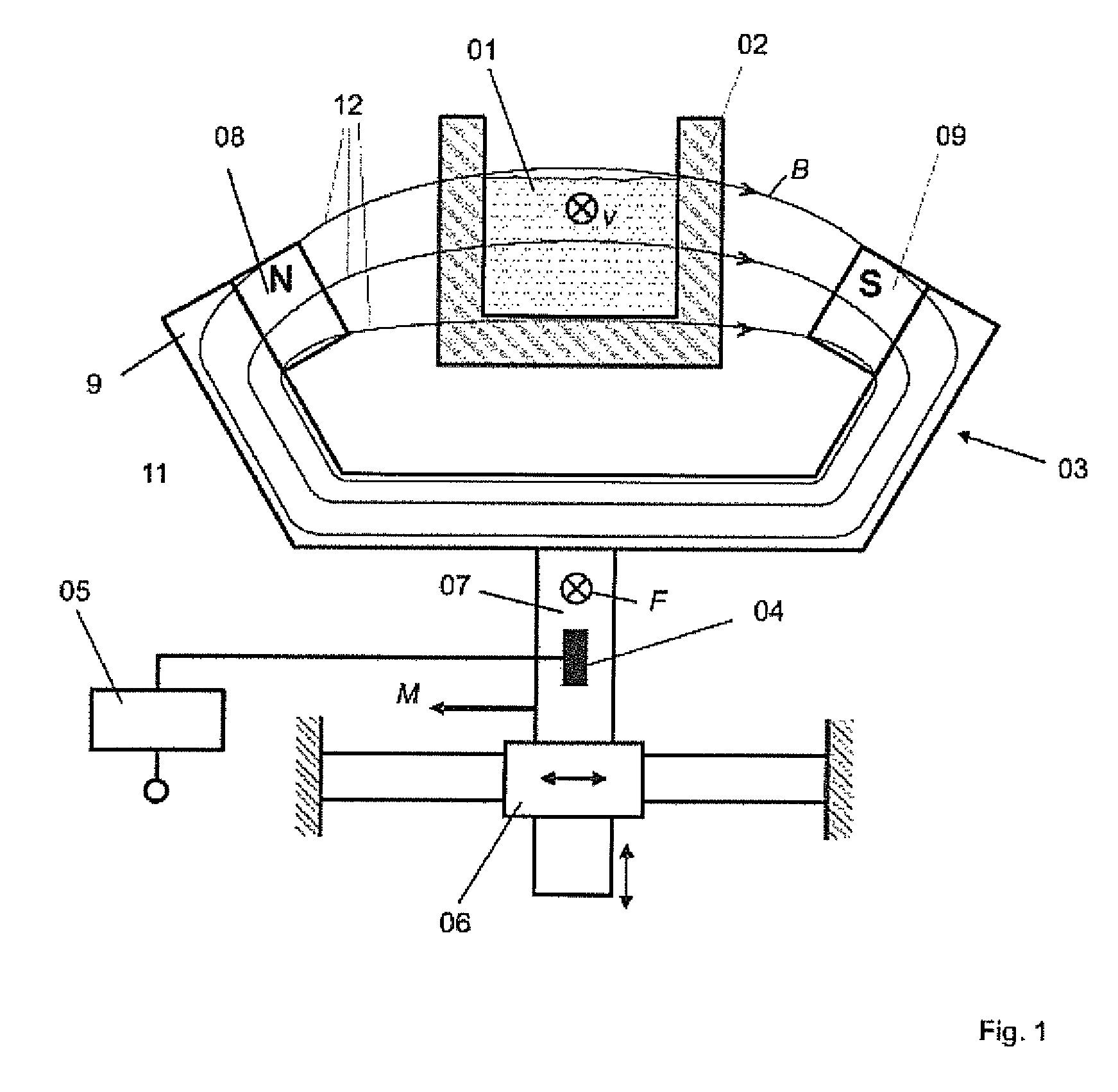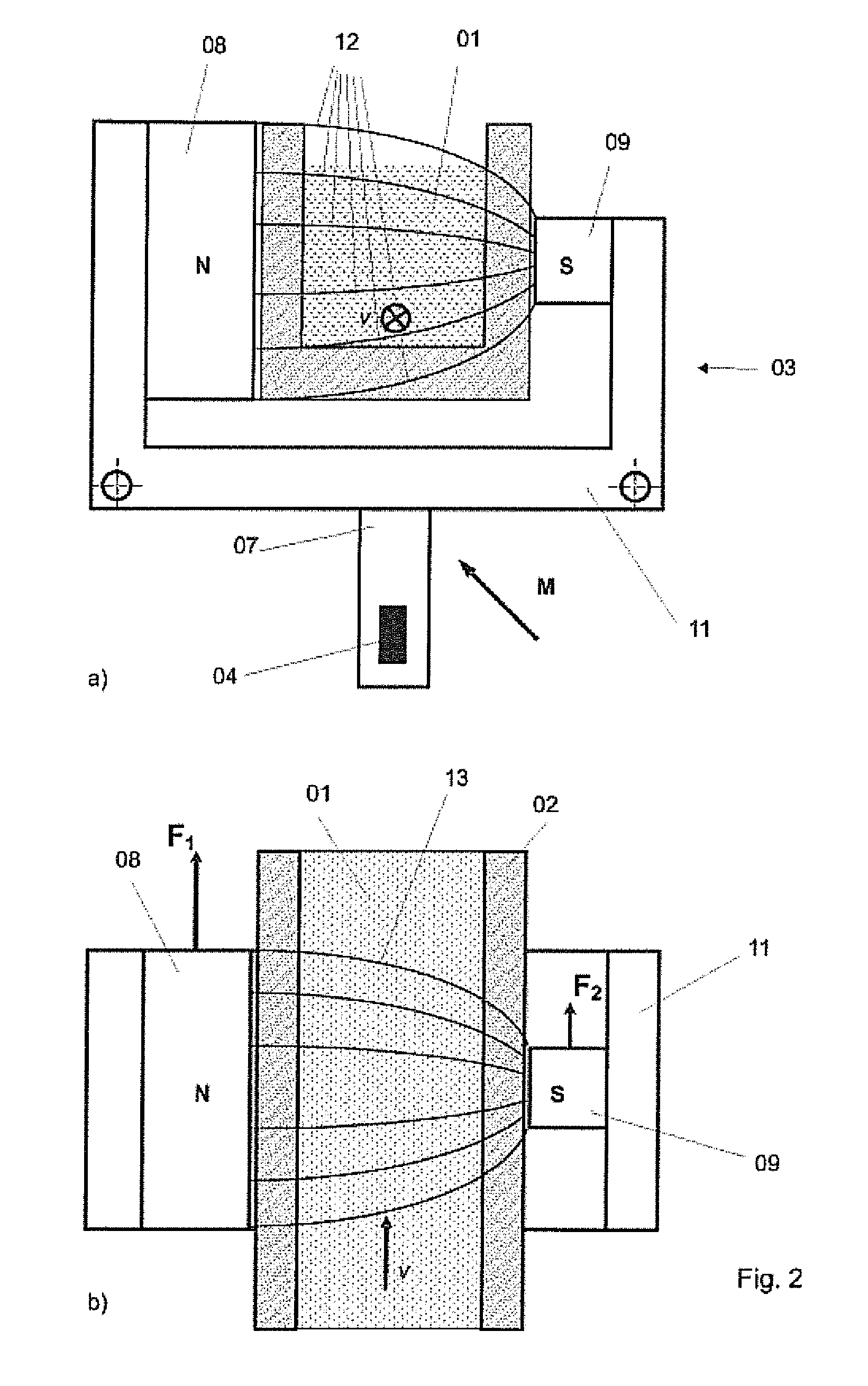Method and arrangement for the contactless inspection of moving electrically conductive substances
a technology of moving electrically conductive substances and contactless inspection, which is applied in the direction of magnetic measurements, devices using electric/magnetic means, instruments, etc., can solve the problems of not allowing the measurement of flow velocity of very slowly flowing or very weak electrically conductive substances, and the measurement accuracy of the system is greatly limited, so as to achieve high measurement precision and sensitivity, and easy implementation.
- Summary
- Abstract
- Description
- Claims
- Application Information
AI Technical Summary
Benefits of technology
Problems solved by technology
Method used
Image
Examples
second embodiment
[0054]FIG. 2 shows a Lorentz force anemometer. In this embodiment, the magnetic system 03 is asymmetrical and so the primary field B has an inhomogeneous configuration. The oppositely placed permanent magnets 08, 09 have different sizes and / or different magnetization strengths. The inhomogeneous design of the magnetic field B has the advantage that all components of the force F and the torque M acting on the magnetic system 03 (i.e., all state parameters) are different from zero, thereby achieving maximum information about the substance 01.
[0055]This circumstance is illustrated in part a of FIG. 2 by representing the directional vector of the torque M acting on the magnetic system 03. In contrast to this, the vertical force component in the system shown in FIG. 1, for example, is equal to zero because of the left / right symmetry and does not contribute to the information obtained.
[0056]Part b of FIG. 2 shows a plan view of the Lorentz force anemometer of the second embodiment. One re...
third embodiment
[0057]FIG. 3 shows, in the invented Lorentz force anemometer, a magnetic system 03 with inhomogeneous primary magnetic field B in exploratory mode. Parts a and b of the figure show different positions of the magnetic system 03 relative to the substance 01, part c shows a plan view of part a. The magnetic system 03 has two poles, consisting of permanent magnets 08, 09, which are arranged with a horizontal offset relative to each other and magnetically joined together by the yoke 11. This produces an inhomogeneous primary field B, which is shown by the field lines 12 drawn. The overall magnetic system 03 can be moved vertically by means of the actuator system 06, not shown. The yoke 11 is at least partly enclosed by a coil 13. The strength of the primary field B created by the permanent magnets 08, 09 and the coil 13 is varied by the size of the current flow in the coil 13.
[0058]The magnetic system 03 shown in FIG. 3 has two actuating variables for the exploratory mode, namely, the ve...
fourth embodiment
[0063]FIG. 4 shows the Lorentz force anemometer with a rotating primary field B. The magnetic system 03 in this case comprises two oppositely placed disks 14 of magnetically conductive material, joined together, which form the yoke, in which a plurality of permanent magnets 08, 09 with alternating polarity are embedded or glued on (FIG. 4b and c).
[0064]This disks 14 are arranged opposite each other so that each time one magnetic north pole of a permanent magnet 08 lies opposite a magnetic south pole of a permanent magnet 09.
[0065]In the exploratory mode, the magnetic system 03 is placed in rotation by the Lorentz force generated by the moving substance 01 and the rotary speed ω is measured continually by means of a tachometer 15. From the measured speed ω, the evaluation unit 05 calculates the sought property of the substance 01, such as the flow rate.
[0066]It also within the scope of the invention to install a motor with integrated torque measuring system, instead of the tachometer...
PUM
| Property | Measurement | Unit |
|---|---|---|
| conductance | aaaaa | aaaaa |
| magnetic field | aaaaa | aaaaa |
| magnetic system | aaaaa | aaaaa |
Abstract
Description
Claims
Application Information
 Login to View More
Login to View More - R&D
- Intellectual Property
- Life Sciences
- Materials
- Tech Scout
- Unparalleled Data Quality
- Higher Quality Content
- 60% Fewer Hallucinations
Browse by: Latest US Patents, China's latest patents, Technical Efficacy Thesaurus, Application Domain, Technology Topic, Popular Technical Reports.
© 2025 PatSnap. All rights reserved.Legal|Privacy policy|Modern Slavery Act Transparency Statement|Sitemap|About US| Contact US: help@patsnap.com



